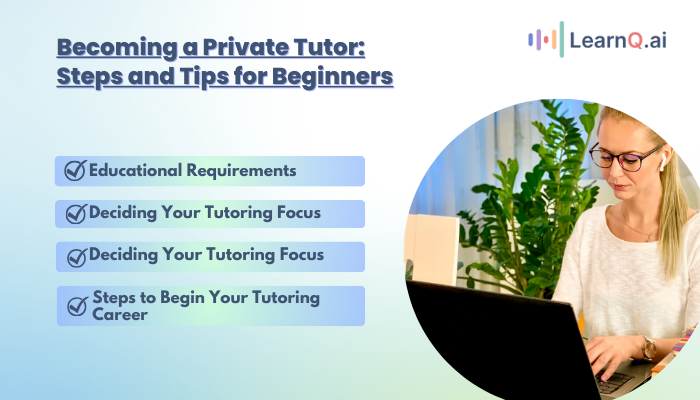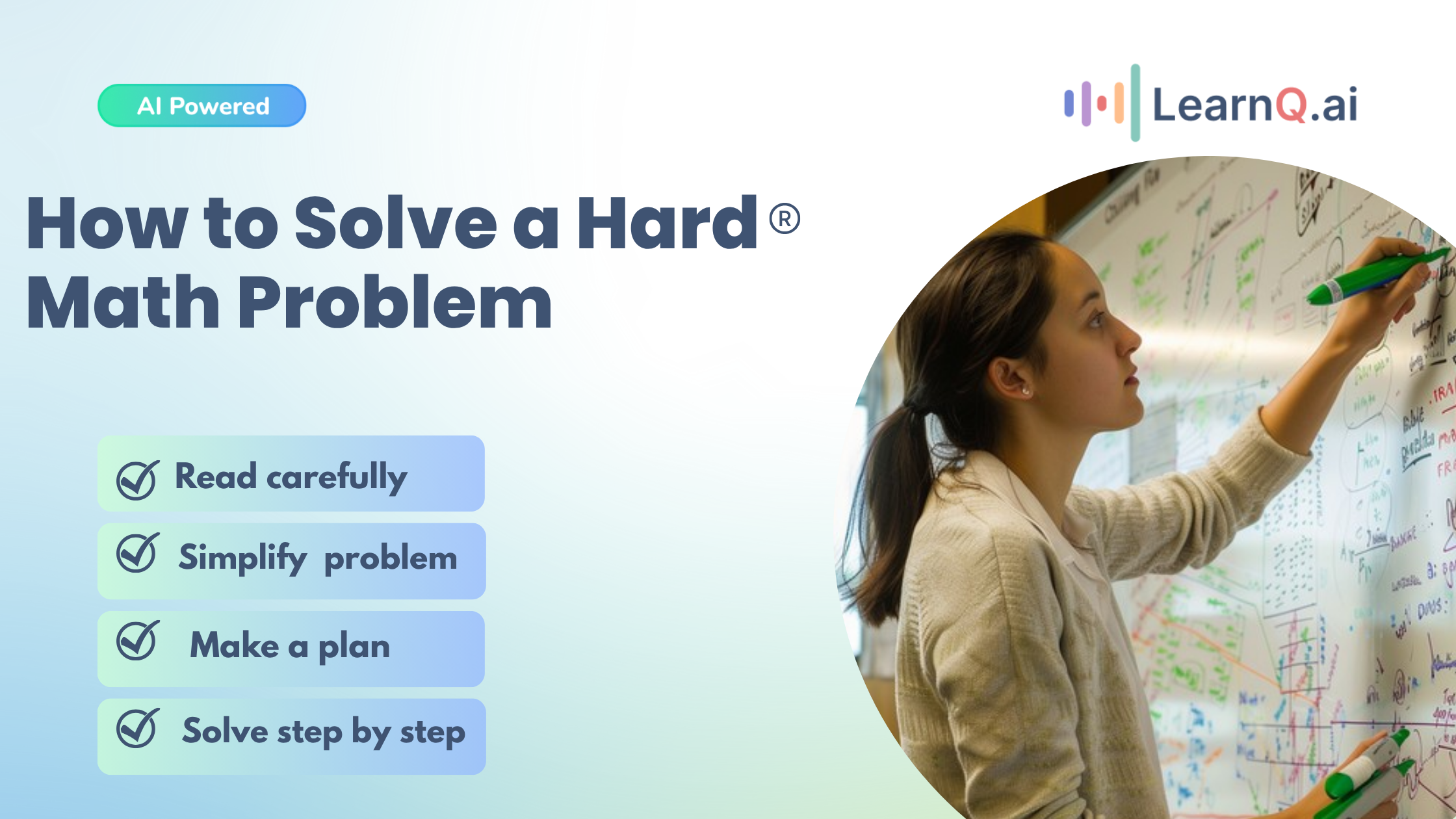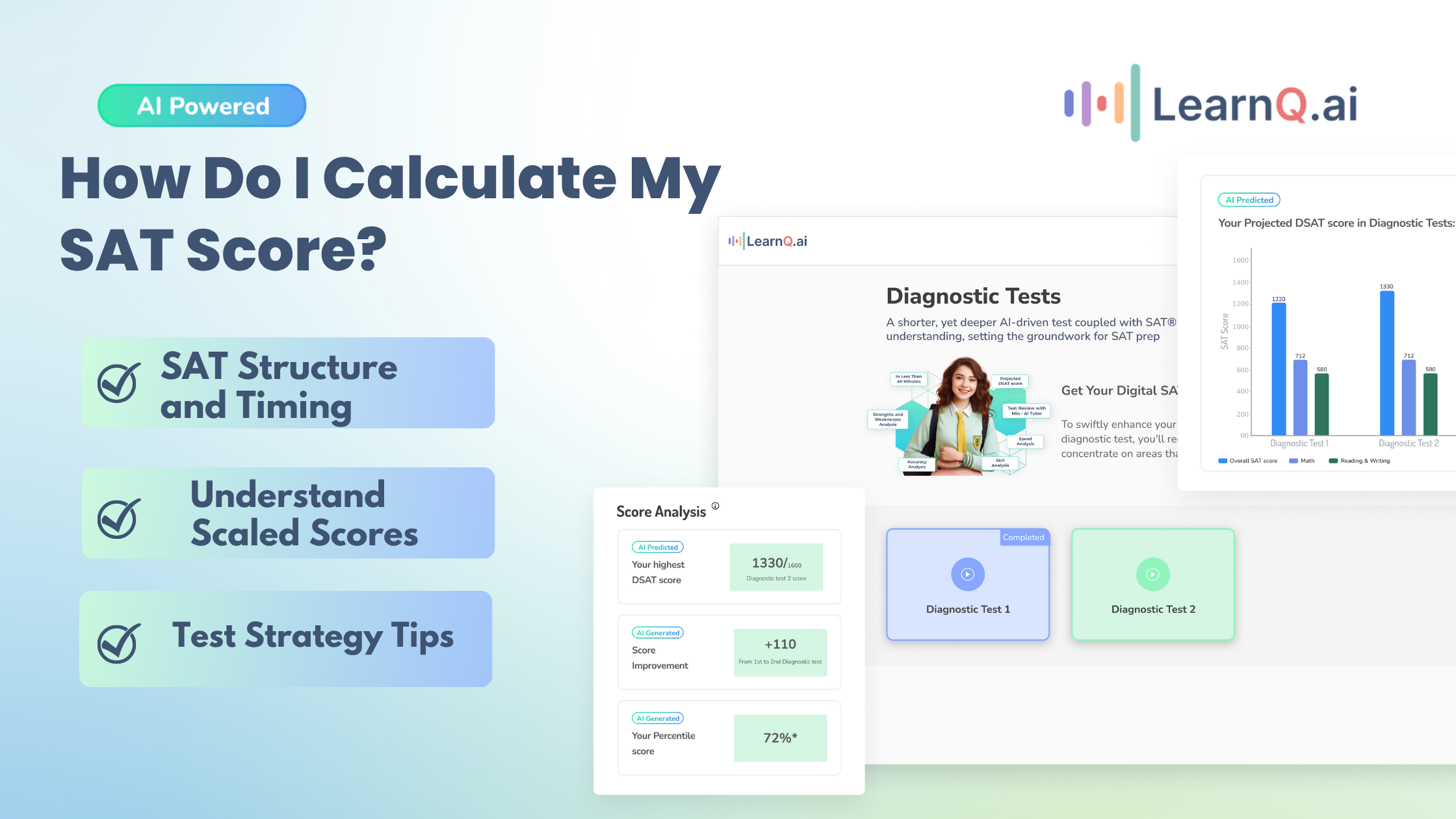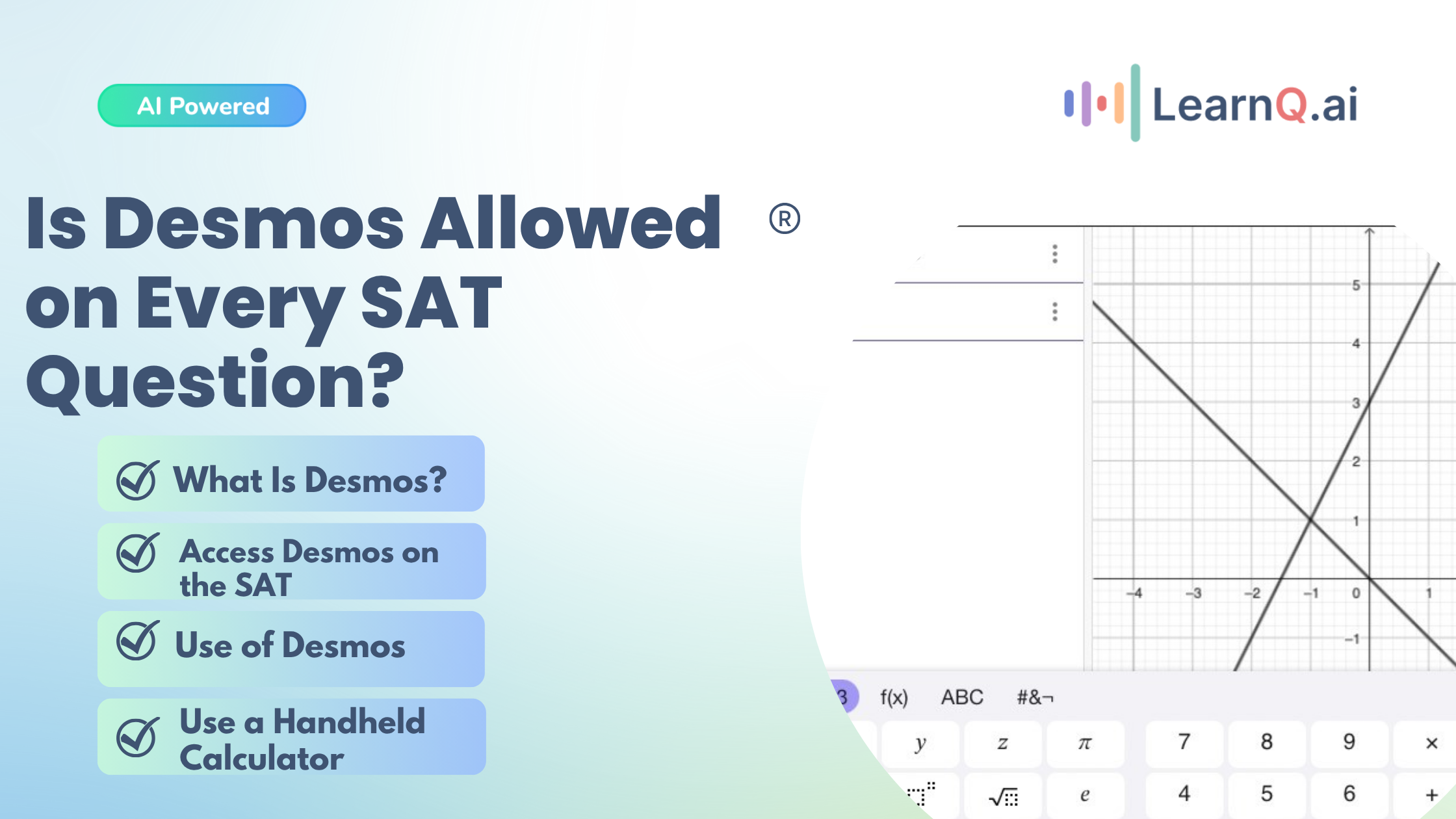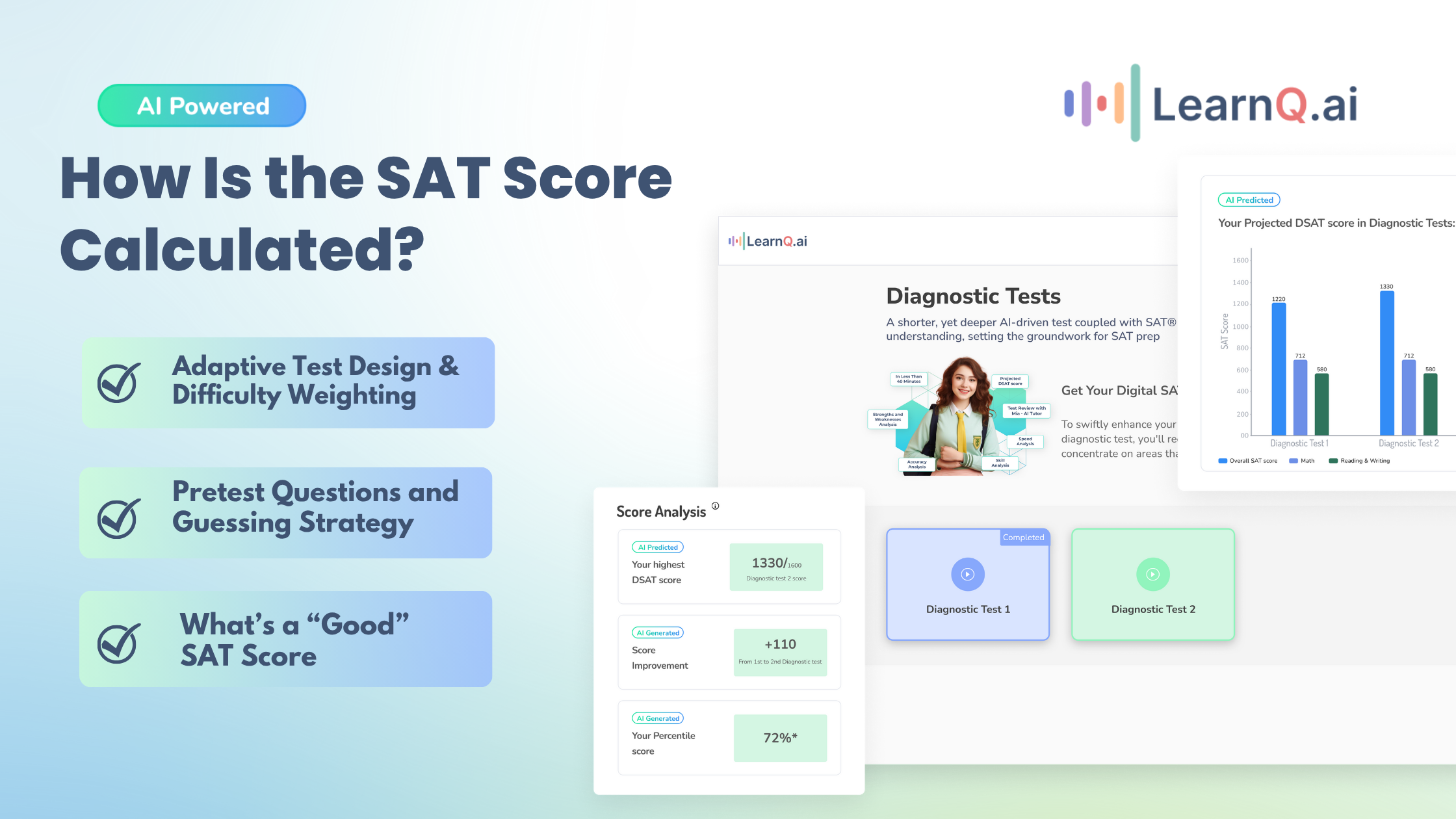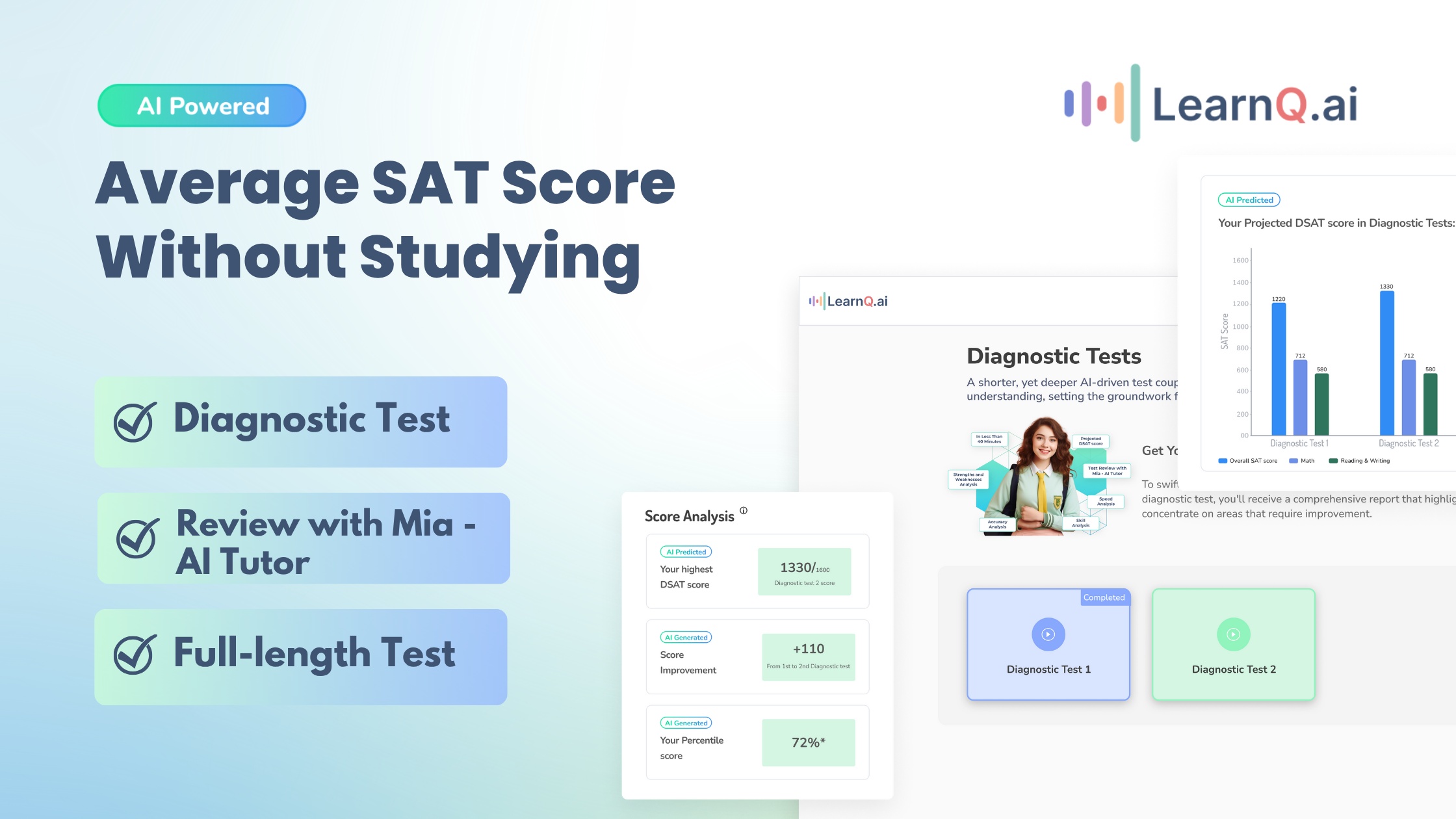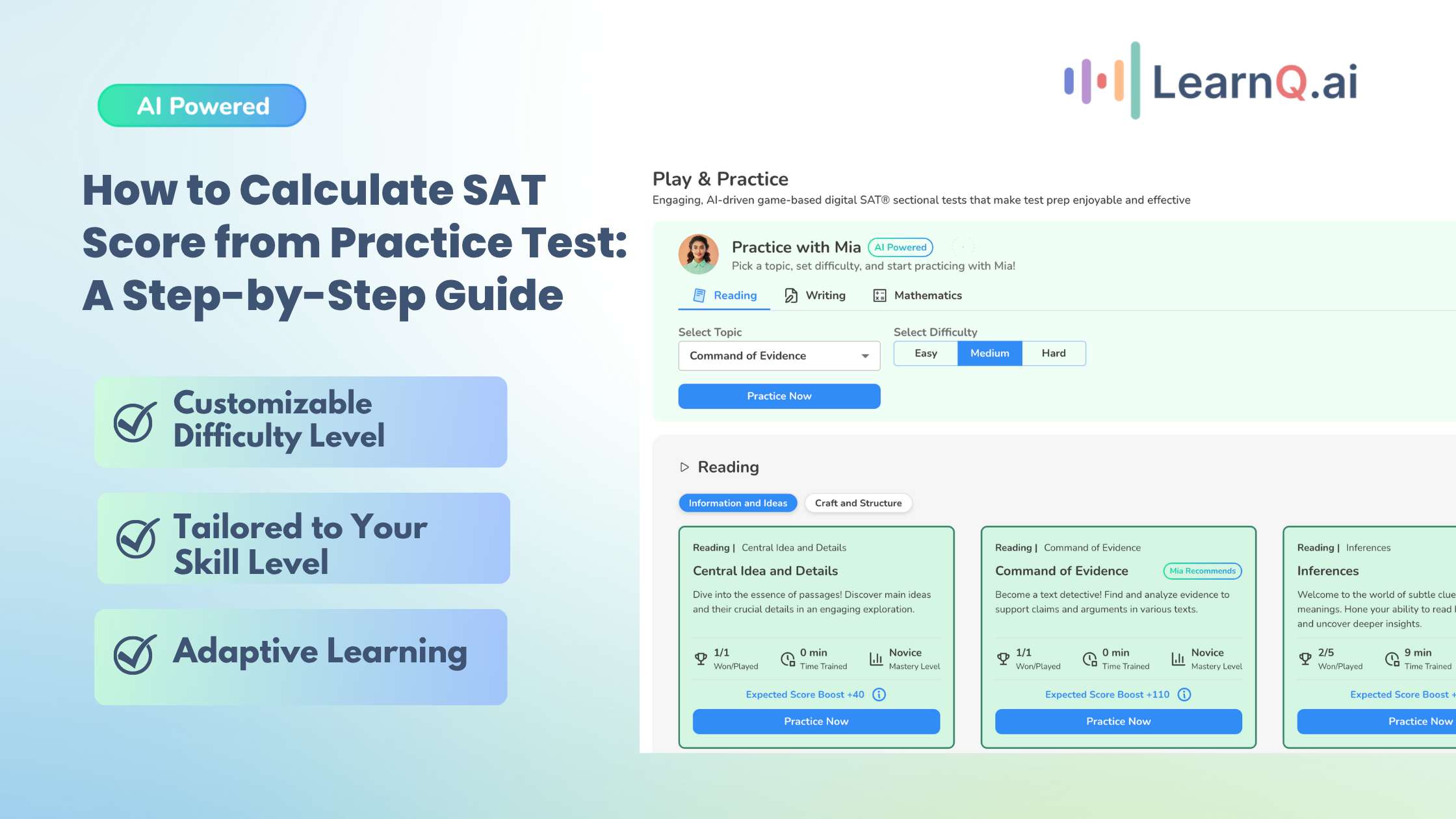The global private tutoring industry is experiencing rapid growth, with a compound annual growth rate of 8.52% projected by 2030. In fact, online private tutoring alone is expected to generate USD 71.38 billion in revenue by 2028.
This booming market offers teachers and institutions a tremendous opportunity to meet growing demand while providing flexible, tailored learning experiences.
Private tutoring allows educators to design custom learning plans and flexible schedules. At the same time, students receive focused, one-on-one support tailored to their needs.
LearnQ.ai is Powered by VEGA AI—Is your Institute Next?
Give students a Duolingo-style test-prep platform with Shopify-level customization for tutors and institutes.
So, if you’re looking to become a private tutor, this guide covers everything you need to know. Read on!
Understanding the Tutoring Landscape
Tutors today are expected to use advanced tutoring skills to provide tailored instruction that meets individual learning styles while building strong student relationships. Choosing between in-person, online, group, or one-on-one formats—and selecting the right subjects—can greatly affect your ability to grow and retain clients.
In this section, you will understand your role and the different types of tutoring, along with insights on aligning services with market needs.
Role of a Tutor
As a tutor, your role involves more than delivering lessons. It’s about understanding each learner’s unique needs and creating a supportive environment where they can thrive.
Here’s what your responsibilities will typically include:
- Personalized instruction: Tailor your teaching methods to meet each student’s learning style, ensuring the material resonates with them.
- Adapting to learning styles: Recognize and adjust to students’ different ways of absorbing information, whether they learn best visually, verbally, or kinesthetically.
- Building rapport with students: Establish trust and open communication to create a positive learning atmosphere that encourages growth and confidence.
Types of Tutoring
Private tutoring strategies include understanding your options to tailor your services to attract the right students and deliver effective results. Take a look at the most common tutoring formats and the diverse range of subjects you can cover.
- Tutoring Formats
Each format brings its own advantages, and choosing the right one depends on both your teaching style and your student’s needs:
| Format | Description |
| In-person | Face-to-face tutoring where direct interaction enhances engagement and personalized support. |
| Online | Virtual sessions provide flexibility and accessibility for students anywhere in the world. |
| Group | Small group sessions that focus on collaborative learning while reducing individual costs. |
| One-on-one | Personalized, intensive instruction focused entirely on the student’s needs. |
- Subjects Offered
The subjects you specialize in can also differentiate your services and appeal to specific student groups.
- Academic topics: Cover core subjects like math, science, language arts, and social studies.
- Test prep (SAT, ACT): Provide targeted tutoring to help students excel in standardized exams.
- Specialized skills: Teach niche subjects like coding, art, or foreign languages to students with specific interests.
Steps to Become a Private Tutor
According to a San Bernardino Valley College study, students who receive face-to-face tutoring see an average 12% increase in standardized test scores. They outperform their untutored peers across 45 out of 52 academic subjects and surpass non-tutored peers by nearly 90%.
These results emphasize the tangible impact of quality tutoring and show the potential influence you could have as a private tutor. Ready to make a difference? Here’s a breakdown of the steps you need to follow.
1. Assess Your Skills
The first step to becoming a private tutor is identifying your strengths. Reflect on the subjects and areas where you have the most knowledge and experience. Whether it’s academic topics, test preparation, or specialized skills like music or coding, pinpointing your expertise helps position you as a credible tutor in your niche.
2. Obtain Certifications
While not always required, certifications can significantly boost your credibility. Consider obtaining a teaching certification or a tutoring-specific credential, especially if you’re targeting competitive fields like SAT or ACT prep. These certifications demonstrate professionalism and commitment, which can attract more clients.
Also Read: Know About Digital SAT and PSAT/NMSQT Assessments.
Enhance your Digital SAT study routine with AI-driven insights and personalized practice tests.
3. Define Your Niche
To stand out, it’s essential to define your niche. Choose an area that aligns with both your expertise and current market demand. For example, you might specialize in elementary math tutoring or SAT prep for high school students. A well-defined niche allows you to attract clients who need your specific skill set rather than trying to be a generalist.
4. Set Pricing and Policies
Establishing clear pricing and policies is key to running a smooth tutoring business. Research market rates in your area or for your tutoring format (online vs. in-person) and set competitive prices. Additionally, policies on cancellations, rescheduling, and payment methods must be established to ensure clarity and professionalism from the start.
Also Read: Rising Trends of AI in EdTech.
Finding Students
Finding students is one of the most important aspects of becoming a successful private tutor. You may have the skills, but without a consistent flow of students, your tutoring business won’t reach its full potential.
Check out how you can attract students and build your network.
1. Marketing Strategies
To become a private tutor and reach potential students, marketing is key. Here are some strategies to help you spread the word about your services:
- Using social media: Platforms like Facebook, Instagram, and LinkedIn are excellent for promoting your tutoring services. Share valuable content, success stories, and testimonials to build trust and engagement with potential students and parents.
- Local advertising: Advertise your services within your community using flyers, community bulletin boards, and local publications. This is especially effective for in-person tutoring.
- Word-of-mouth referrals: Encourage satisfied students or parents to recommend your services to others. Offering a referral discount can incentivize this.
- Use tutoring platforms like Vega.AI: Vega.AI connects tutors with students and simplifies operations.
Use AI to provide personalized recommendations that cater to each student’s unique learning needs and preferences.
Convert free students into paid ones by showcasing the value of your premium offerings and personalized support.
2. Build a Network
A strong network can provide a steady flow of students:
- Collaborate with teachers: Build relationships with local teachers or educational institutions. They can refer students who need extra help outside of school.
- Educational organizations: Partner with learning centers or after-school programs to offer your tutoring services in addition to their programs.
- Join online communities: Participate in education forums and social media groups where parents and students seek tutors. Establish yourself as an expert by offering valuable advice and insights.
Effective Tutoring Strategies
To truly impact students, you must adopt strategies that cater to individual student needs and use modern tools to enhance learning outcomes. Effective tutoring goes beyond instruction.
It involves creating personalized learning experiences, using technology to track progress, and keeping students engaged and motivated.
1. Customized Learning Plans
A one-size-fits-all approach rarely works in tutoring. Start by assessing each student’s needs, strengths, and weaknesses. Create tailored learning plans with measurable goals that align with the student’s pace and learning style. This personal approach ensures that progress is tracked and celebrated, allowing growth and confidence.
2. Use Technology
Technology plays a pivotal role in modern tutoring. Use platforms like Vega.AI, which provides access to practice materials and data analytics. These resources help you identify areas for improvement and adjust your teaching accordingly.
Educational tools like interactive quizzes, AI tests, and progress tracking can elevate the learning experience and ensure that students stay on course.
3. Engage Students
Engagement is crucial for effective tutoring. Consider the following strategies to create a supportive and motivating learning environment.
- Encourage Active Participation: To get students involved, ask open-ended questions and promote discussions. This approach not only stimulates critical thinking but also helps them feel valued and heard.
- Use Real-World Examples: Relate lessons to real-life scenarios to make the material more relatable and exciting. This contextual learning helps students understand the relevance of what they are studying.
- Celebrate Small Wins: Acknowledge and celebrate even the smallest achievements. This practice boosts students’ confidence and keeps them motivated to continue their learning journey.
- Implement the Mirror Strategy: Pair students with peers for collaborative problem-solving. This not only enhances engagement but also allows them to reinforce concepts by teaching each other, fostering deeper understanding and retention.
Enhance your Digital SAT study routine with AI-driven insights and personalized practice tests.
Educational Tutoring Certification
Are you looking to establish yourself as a qualified educator and gain official certification in tutoring? The National Tutoring Association (NTA) offers a structured pathway with various certification levels tailored to different areas of expertise.
Obtaining this certification not only enhances your credibility but also equips you with the necessary skills to effectively support your students.
Below is an overview of the certification requirements, organized by level, to help you determine the best path for your tutoring career.
| Certification Level | Prerequisites | Requirements | Competency Validation |
| Basic Level Tutor | Current NTA membership | AA or AS degree (or started at an accredited institution) | 30 hours of documented tutoring |
| Intermediate Level Tutor | Basic Level Tutor Certification | Current NTA membership | AA or AS degree |
| Advanced Level Tutor | Intermediate Level Tutor Certification | Current NTA membership | Associate’s Degree + 30 hours toward BA or BS degree |
| Reading Tutor | Current NTA membership | Associate’s Degree | 50 hours of documented reading tutoring (can be volunteer hours) |
| Math Tutor | Current NTA membership | AA or AS degree (or started at an accredited institution) | 50 hours of documented Math tutoring |
| Master Level Tutor | Advanced Level Tutor Certification | Current NTA membership | Bachelor’s Degree required; Master’s Degree preferred |
| Tutor Trainer | Current NTA membership | Bachelor’s Degree required; Master’s Degree preferred | 150 hours of documented tutoring |
| Master Tutor Trainer | Current NTA membership | Master’s Degree required | Minimum of 7 years experience post-certification |
| Critical Thinking Tutor | Basic Level Tutor Certification | Current NTA membership | Minimum AA or AS Degree |
| NTA Writing Tutor | Current NTA membership | Minimum AA or AS Degree | 50 hours of documented writing tutoring |
| NTA ACT/SAT Tutor | Completion of TPAPT Instructor Training | Current NTA membership | Minimum AA or AS Degree |
Tips for Success
Just as a gardener tends to their plants with care, patience, and the right tools, a tutor must nurture their students’ growth. This is done through personalized attention and continuous improvement.
To help your students flourish, here are some essential tips that can guide you in creating a thriving educational environment.
- Continuous Development: Pursue ongoing learning and professional development opportunities, such as workshops, webinars, and conferences, and consider advanced certifications to deepen your expertise.
- Gather Feedback: Solicit feedback from students and families to improve teaching methods and adapt approaches while regularly checking in to understand their needs and perceptions.
- Build Relationships: Maintain strong communication and rapport with students and their families to establish trust and create a more productive learning environment.
- Set Clear Goals: Collaborate with students to set specific, measurable learning objectives and track progress to keep both you and your students focused on desired outcomes.
- Emphasize Active Learning: Encourage active participation through hands-on activities and discussions to make learning engaging and enjoyable for students.
- Stay Organized: Keep detailed records of students’ progress, lesson plans, and feedback to prepare effectively for each session and personalize instruction based on individual needs.
- Adapt Your Teaching Style: Be flexible and willing to adapt your teaching methods to cater to different learning styles, using visual aids, auditory resources, or kinesthetic approaches as needed.
- Encourage Self-Reflection: Teach students to self-assess and reflect on their learning experiences to foster independence and critical thinking.
- Utilize Technology: Incorporate technology into your tutoring sessions by using educational apps, online resources, and interactive tools to enhance engagement and provide diverse learning experiences.
- Network with Other Educators: Connect with other tutors and educators to share best practices, resources, and support, building a professional network for valuable insights and collaboration.
- Practice Patience and Empathy: Understand that each student learns at their own pace. Practice patience and empathy to create a safe space where students feel comfortable making mistakes and asking questions.
Also Read: Handling Artificial Intelligence In Education.
LearnQ.ai is powered by VEGA AI—Is your institute next?
Offer students a Duolingo-style test-prep platform with Shopify-level customization for tutors and institutes.






Conclusion
Becoming a private tutor involves a blend of dedication, continuous learning, and effective relationship-building with your students. You can create a positive and impactful learning environment by following the key steps outlined in this blog.
Consider using Vega AI to enhance your tutoring experience, where you can grow revenue by 3x. Our powerful features include custom branding, scheduled tests, AI-powered analytics, 24/7 technical support, and more! Join us today and transform your tutoring services!

